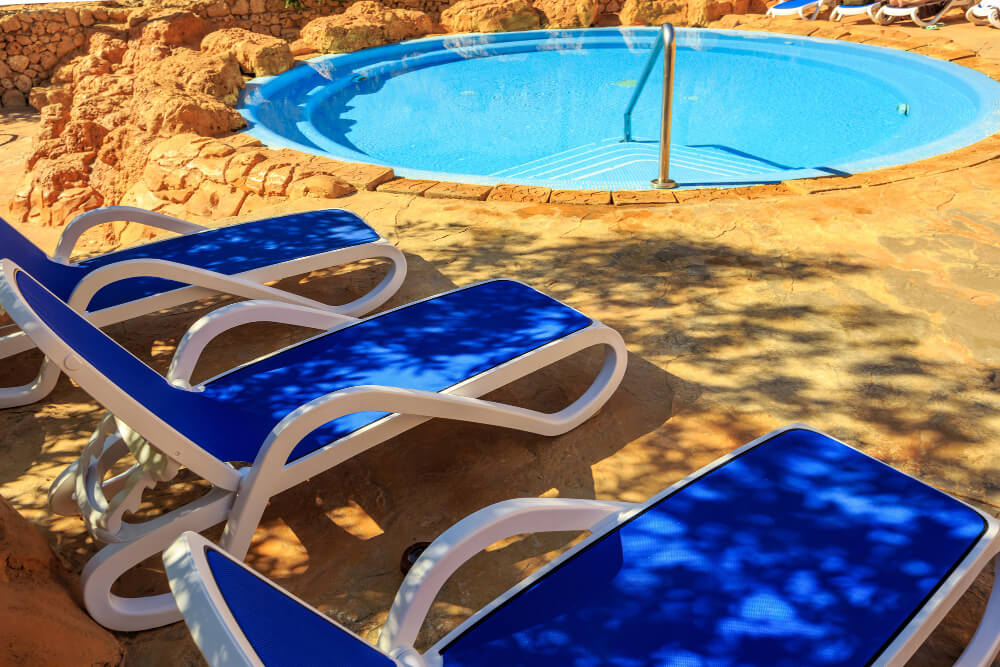The History of Gunite Pools and Their Popularity

Gunite pools are known for their durability, customizability, and luxury appeal. Today, they’re a top choice for homeowners seeking a long-lasting, high-end pool—but have you ever wondered where gunite pools came from and why they’ve become so popular?
Understanding the history of gunite pools gives us insight into how they evolved from a novel construction material to the gold standard in custom pool design. In this article, we’ll explore the origins of gunite, how it was introduced into pool construction, and the reasons it remains the preferred choice for homeowners and pool builders alike.
💡 What Is Gunite?
Before we dive into the history, let’s define what gunite actually is.
Gunite is a mixture of cement, sand, and water applied pneumatically (with high-pressure air) over a rebar framework. It’s a type of sprayable concrete and is often used interchangeably with “shotcrete,” although the two differ slightly in how the material is mixed and applied.
Key Features:
Extremely strong and durable
Can be molded into any shape or design
Bonds well to vertical and curved surfaces
Ideal for freeform and custom pool designs
Gunite allows for endless customization—from shape and size to built-in spas, tanning ledges, and water features—making it perfect for both residential and commercial use.
🏗️ The Invention of Gunite: A Revolutionary Material
The origins of gunite trace back to the early 1900s. It was invented in 1907 by Carl Akeley, a sculptor and taxidermist who needed a method for restoring crumbling museum artifacts.
Akeley developed a process to spray a mixture of dry cement and sand through a hose, adding water at the nozzle. This innovation allowed him to create durable, detailed repairs with less mess and improved control. He called the technique “gunite,” derived from its application via a pneumatic “gun.”
Early Uses:
Museum restoration and sculpture work
Structural repairs
Tunnel and dam reinforcement
Architectural facades
Gunite proved to be exceptionally strong and adaptable, leading engineers and contractors to adopt it for broader construction applications—including swimming pools.
🏊 The First Gunite Pools: 1930s–1950s
Gunite began to make its way into the swimming pool industry in the 1930s, when builders realized its potential for creating permanent, watertight structures that could be shaped to fit any yard or design concept.
By the 1950s, gunite had become a popular choice for residential pools in California and Florida, where warm climates and booming suburbs drove the demand for backyard pools.
Why Gunite Was Revolutionary for Pools:
Could be sprayed on-site to create any custom shape
Required no prefabricated molds or liners
Was more durable than vinyl or fiberglass alternatives
Allowed builders to work with elevation changes, landscaping, and architectural elements
As suburban development took off, especially in warm-weather states, gunite pools became a symbol of modern luxury and leisure.
📈 Gunite Pools and Their Rise in Popularity
From the 1960s onward, gunite pools saw explosive growth in both residential and commercial markets. Homeowners loved the custom design possibilities, and hotels, country clubs, and public facilities appreciated the long-term durability.
Factors That Drove Popularity:
Post-WWII prosperity and suburban expansion
Boom in outdoor living trends during the 1970s and 1980s
Advancement of pool features like spas, slides, waterfalls, and lighting
Shift from simple rectangles to resort-style freeform designs
Gunite pools allowed homeowners to create backyard escapes tailored to their family’s needs and lifestyle—from lap pools to shallow play zones, swim-up bars, and infinity edges.
🛠️ Gunite Pools Today: A Modern Standard
Today, gunite remains the industry standard for custom, in-ground pool construction. While vinyl and fiberglass options still exist, gunite is considered the premium choice for homeowners who want:
Unlimited design freedom
Integrated features like hot tubs, tanning ledges, and fire bowls
Durability and longevity (50+ years with proper care)
A seamless, high-end aesthetic that blends with modern landscaping
With modern materials and techniques, gunite pools are more customizable, efficient, and energy-smart than ever before.
🔧 Many builders now integrate smart automation systems, LED lighting, eco-friendly finishes, and variable-speed pumps to enhance the experience and reduce operational costs.
🧱 Advantages of Gunite Pools
Here’s a quick breakdown of why gunite remains a favorite:
| Advantage | Why It Matters |
|---|---|
| Custom Shapes | Works for small, irregular, or sloped yards |
| Long Lifespan | Gunite pools can last over 50 years with proper maintenance |
| Strength | High structural integrity means less risk of cracking or shifting |
| Design Integration | Waterfalls, grottos, decks, spas, and landscaping work beautifully with gunite |
| High ROI | Boosts curb appeal and home value in competitive markets |
🔍 Fun Fact: Gunite in Architecture
Did you know? Gunite isn’t just used in pools. It’s also widely used in bridge repairs, tunnels, zoo enclosures, and art installations. Its strength and moldability make it perfect for projects where both durability and flexibility are required.
🏡 Build a Gunite Pool with Harpeth Valley Hardscape
At Harpeth Valley Hardscape, we specialize in building custom gunite pools that are rooted in history—but designed for the future.
Whether you want a modern geometric pool, a natural lagoon-style retreat, or something completely one-of-a-kind, we’ll help you create a gunite pool that brings timeless strength and beauty to your backyard.
From planning and permits to construction and finishing touches, we manage every step with care, precision, and a deep understanding of what makes gunite pools so special.
📆 Fill out the form below to schedule a consultation with our design team and begin your journey toward the perfect pool.



